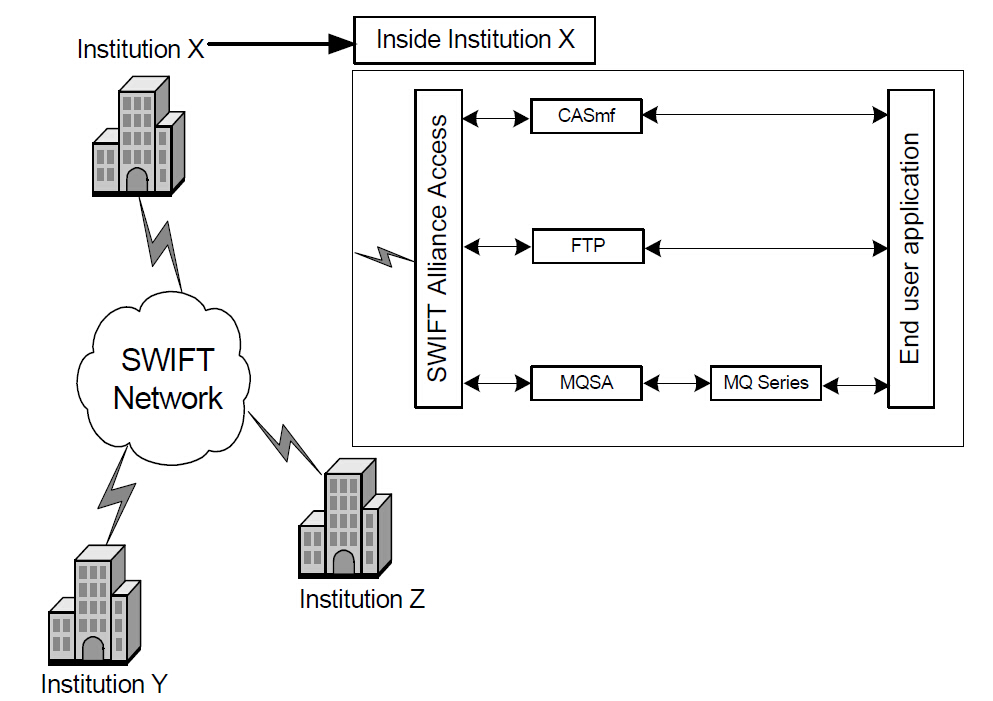Communicating with the SWIFT Network
TIBCO ActiveMatrix BusinessWorks™ Plug-in for SWIFT does not communicate directly with the SWIFT network. To communicate with the SWIFT network, you must have SWIFT Alliance Access (SAA), SWIFT Alliance Entry (SAE), or any other interface approved by SWIFT.
Messages can be produced on a variety of user applications, but they can only be sent to SWIFT through SAA or SAE. Similarly, messages can be processed on a variety of user applications, but can only be received through SAA or SAE.
- CASmf
CASmf is a software used for communication between SAA and other user applications. CASmf uses a MAPID, a name given to each instance of the messaging application, to establish the communication between the user application and SAA. The MAPID is defined in the user’s host and in the SWIFT interface.
CASmf also provides APIs to developers of the user application. With APIs, the user host environment can communicate with the SWIFT interface, establishing a real-time session. After a real-time session is established, financial messages can be exchanged. APIs can open, close, or abort a session, and send or receive data. The CASmf software uses TCP/IP as the communication protocol.
- FTP
An FTP server can be used for communication between SWIFT interfaces and user applications. The user application transfers SWIFT messages to a specified directory on the server. SAA picks up the SWIFT messages from this directory, and sends them to the SWIFT network.
- MQSA
MQSA is a software used for communication between SAA and MQSeries. The MQSA interface is based on the SWIFT Alliance Development Kit (ADK). It uses ADK functions to communicate with SWIFT Alliance, and MQSeries functions to access message queuing services.
The following figure shows how the preceding interfaces are used to integrate SAA with the user application:

